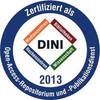In: Car, Adriana (Hrsg.): Geospatial Crossroads GI_Forum '09 : proceedings of the Geoinformatics Forum Salzburg ; [GI_Forum '09 - adVenture GIScience ; symposium from July 07 - 10, 2009]. Heidelberg, Wichmann 2009, pp. 66-75 . ISBN 9783879074815
Preview |
PDF, English
- main document
Download (876kB) | Terms of use |
Abstract
In this paper, a new GIS workflow for fully automated building detection from airborne LiDAR data is introduced. The strengths of both raster and point cloud based methods are combined, in order to derive reliable building candidate regions serving as input for 3D building outline extraction and modeling algorithms. Input data are a normalized Digital Surface Model (nDSM) and a slope-adaptive echo ratio raster, which is a significant parameter for solid objects with low surface roughness, such as buildings. In contrast, high vegetation exhibits a local vertical distribution of laser echoes leading to a low echo ratio value. Potential building areas are detected in the raster domain using standard tools provided by GRASS GIS. Seed regions are identified by using a threshold on (i) object height >2.0 m and (ii) echo ratio >75%. The following growing of the seed regions provides that building walls, overhanging roof parts, and areas obstructed by high vegetation are included. Finally, non-building regions are removed by an object-based classification using a threshold on average laser point surface roughness. The presented candidate region detection achieves high completeness (>97%) with already moderate correctness (>70%). By applying an existing 3D building outline extraction and modeling algorithm, the applicability of the derived candidate building regions is demonstrated.
| Document type: | Book Section |
|---|---|
| Editor: | Car, Adriana |
| Title of Book: | Geospatial Crossroads GI_Forum '09 : proceedings of the Geoinformatics Forum Salzburg ; [GI_Forum '09 - adVenture GIScience ; symposium from July 07 - 10, 2009] |
| Publisher: | Wichmann |
| Place of Publication: | Heidelberg |
| Date Deposited: | 28 Jul 2025 11:45 |
| Date: | 2009 |
| ISBN: | 9783879074815 |
| Page Range: | pp. 66-75 |
| Faculties / Institutes: | Fakultät für Chemie und Geowissenschaften > Institute of Geography |
| DDC-classification: | 550 Earth sciences |









